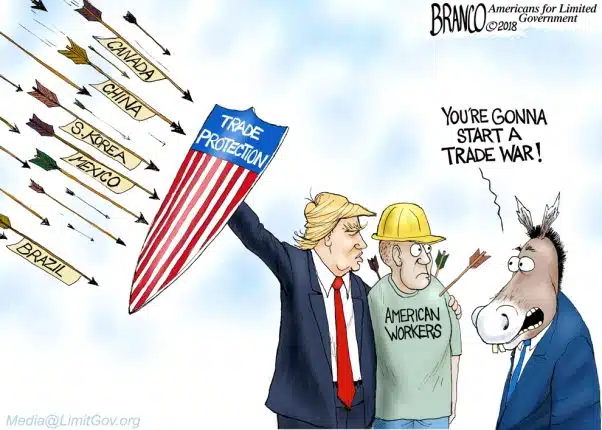
According to a recent report from the Associated Press, “The ranks of America’s poor are on track to climb to levels unseen in nearly half a century, erasing gains from the war on poverty in the 1960s amid a weak economy and fraying government safety net.” And this is climbing as the government spends more than it ever has to fight the “War on Poverty.”
The “War on Poverty,” started by President Lyndon Johnson in 1964, has only resulted in a ballooning of government spending at every level of government. Recent reports are indicating that there is little to show for this gargantuan amount of taxpayer dollars being transferred to those below the poverty line as the poverty rate ticks up to the highest levels seen since the 1960’s. And contrary to the suggestion of all the politicians that state that welfare provides those below the poverty line with upward mobility, very little success can be seen.
A recent report from Michael Tanner of the Cato Institute shows just how much money U.S. taxpayers have spent combating poverty: “Since President Lyndon B. Johnson first declared a “war on poverty” in 1964, federal, state and local governments have spent roughly $15 trillion fighting poverty. In constant dollars, federal spending on welfare and anti-poverty programs has jumped from $178 billion to $668 billion over the past 47 years — a 375 percent increase in constant 2011 dollars. Total welfare spending — including state and local funds — has increased from $256 billion to $908 billion, a 355 percent increase.”
The federal government operates 126 programs aimed at tackling poverty in the hopes that people will improve their situation with a little help from the government. Instead of poverty being eradicated as bloviating politicians routinely insist will happen if just a few more programs are better funded, more people are taking government benefits than ever before.
In July of this year, the Social Security Administration announced that a new record had been set for workers on disability. Currently, there are over 8,750,000 workers on disability, a number that exceeds the populations of 39 U.S. states.
If the above number isn’t staggering enough for you, perhaps this one is. In Congress, the House is currently debating passage of the latest farm subsidy bill, a bill that will cost taxpayers $969 billion over the next 10 years of which 80 percent is spent on food stamps. And there are a large number of Congressmen that believe that this amount is too low.
But the worst part of the ballooning welfare state is that politicians encourage its expansion. The transfer payments are a way for politicians to purchase support. Offering “better” and “expanded” programs that have no real target to wean people off the benefits should be called out for what they are—political office insurance.
If you don’t believe these programs are designed for people to eventually get off of them and truly move up the economic scale, then ask yourself why more people are on these programs than ever before? Ask yourself why there are 126 federal programs on top of various state and local programs? Do you really believe people are that impoverished in the richest country on Earth?
The “War on Poverty” has become a way for politicians to be seen as combating a problem that many people feel is one of the worst problems on Earth. Unfortunately, instead of helping the problem, politicians with lofty promises are sinking the country further in debt while making more Americans dependant on their every government action.
Adam Bitely is the Editor-in-Chief of NetRightDaily.com. You can follow him on Twitter at @AdamBitely.






